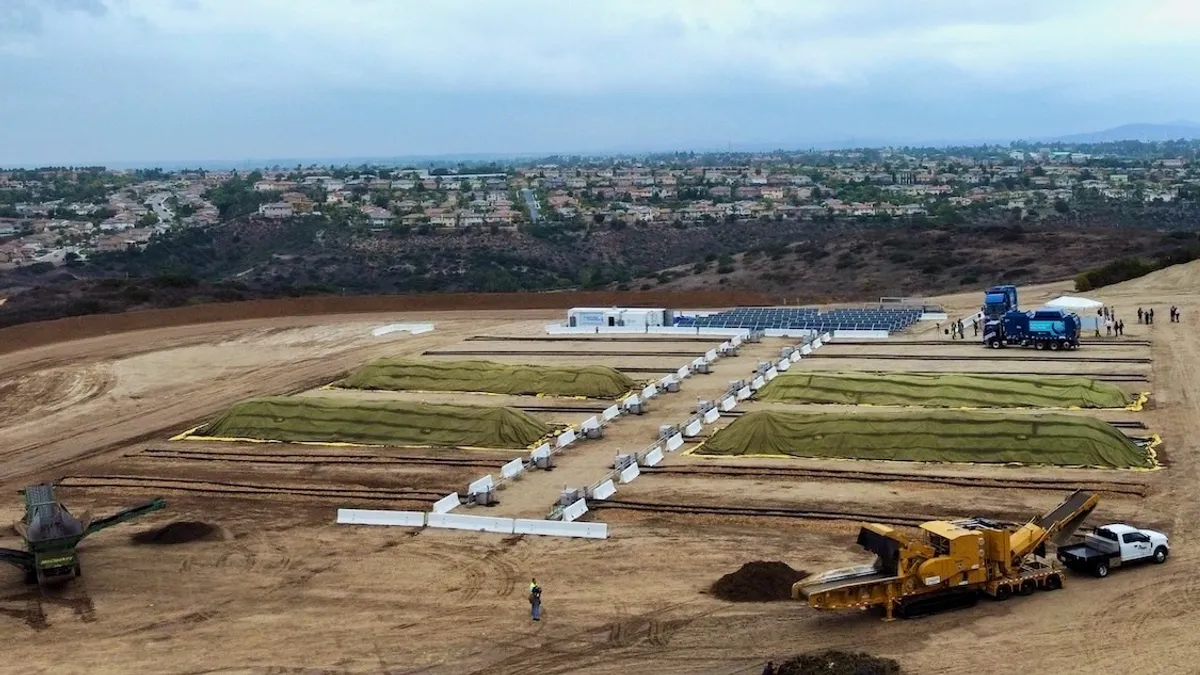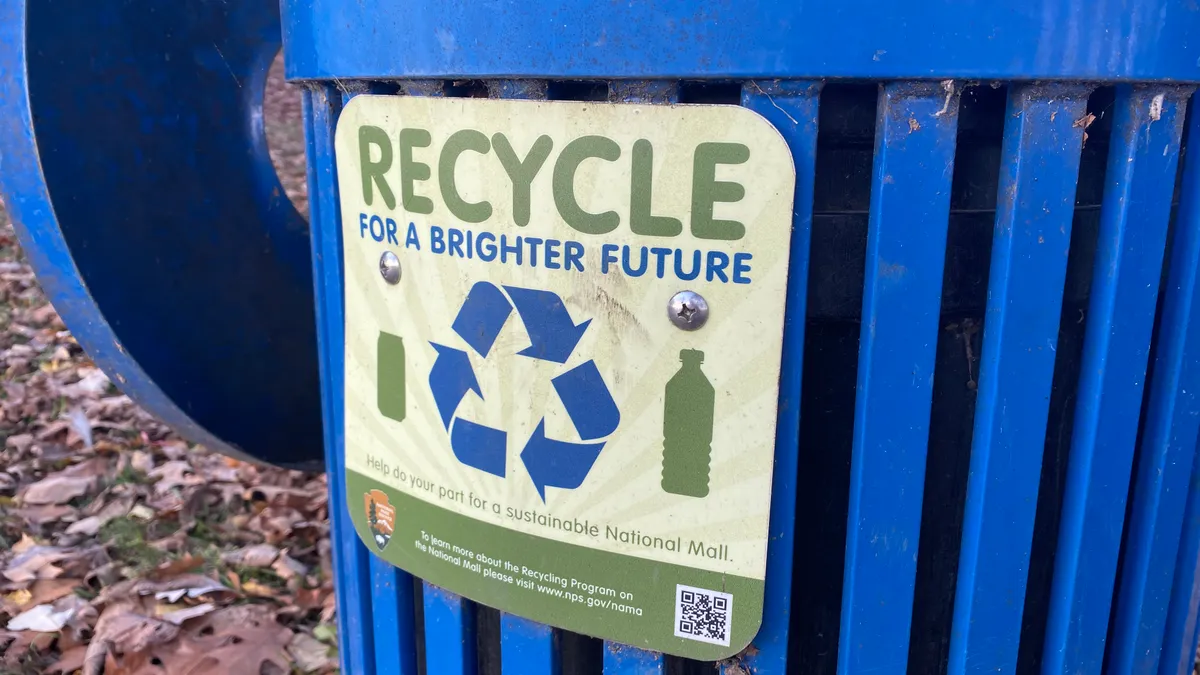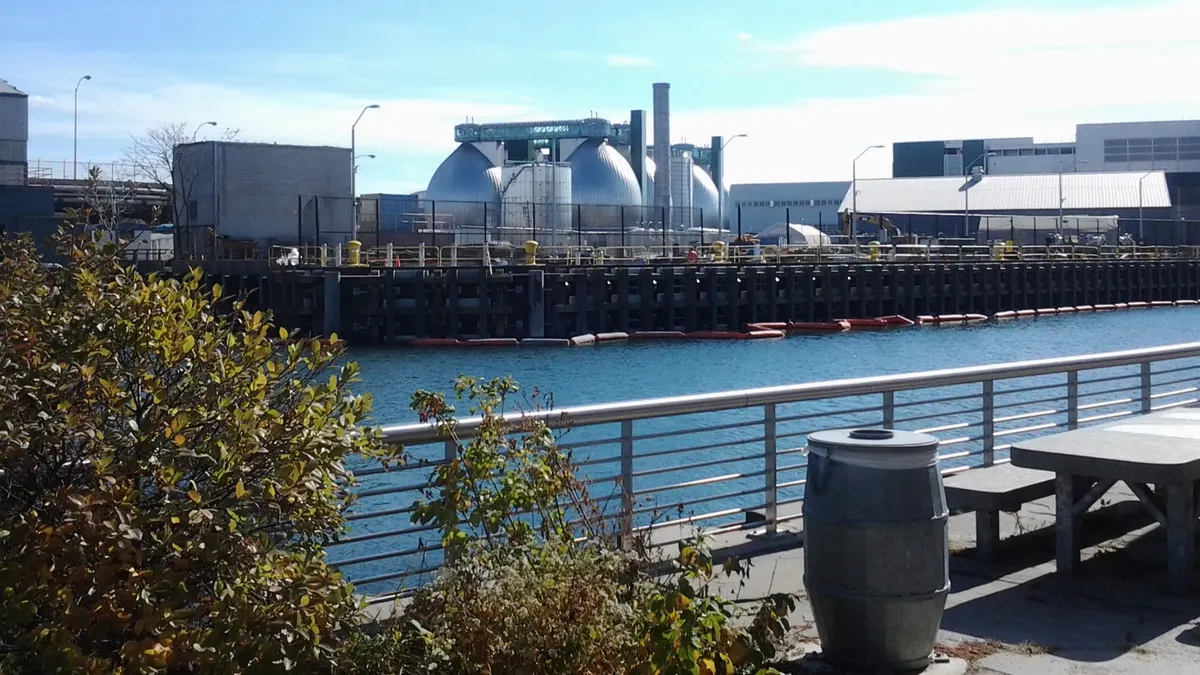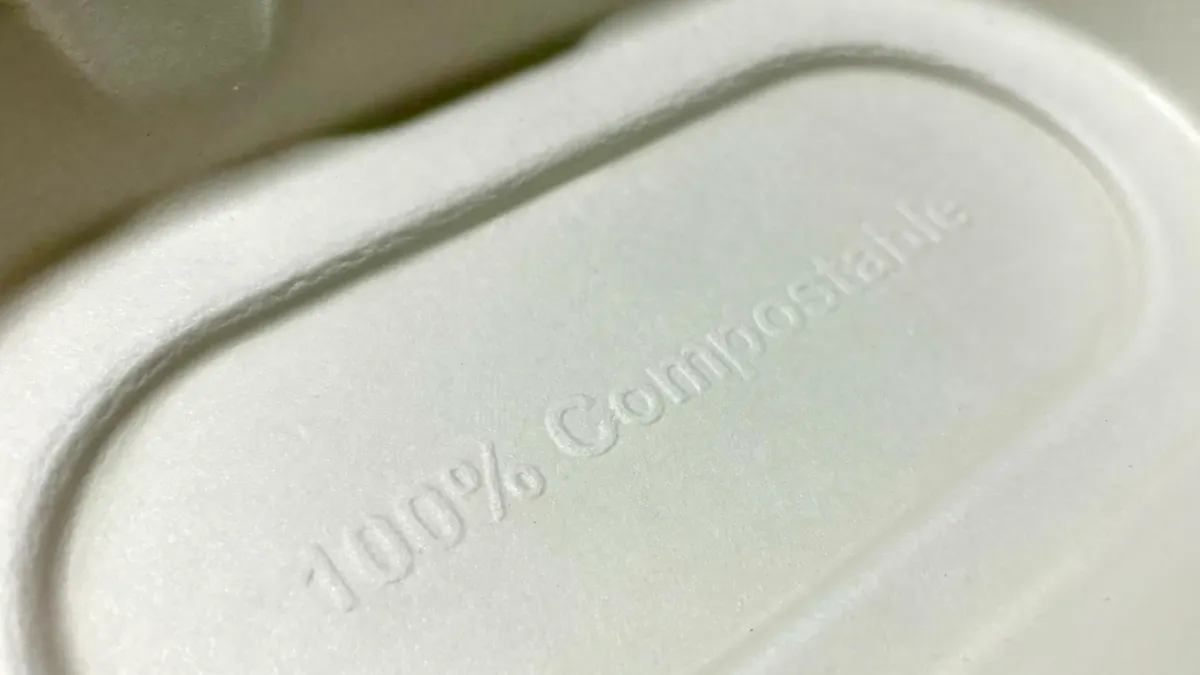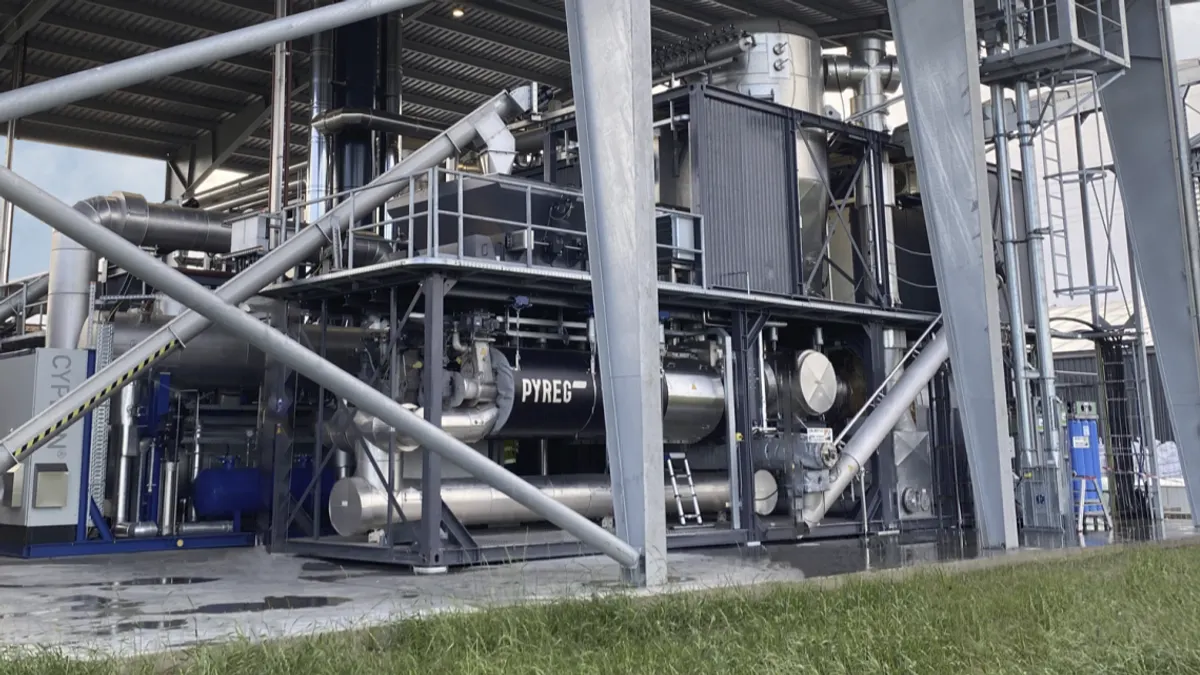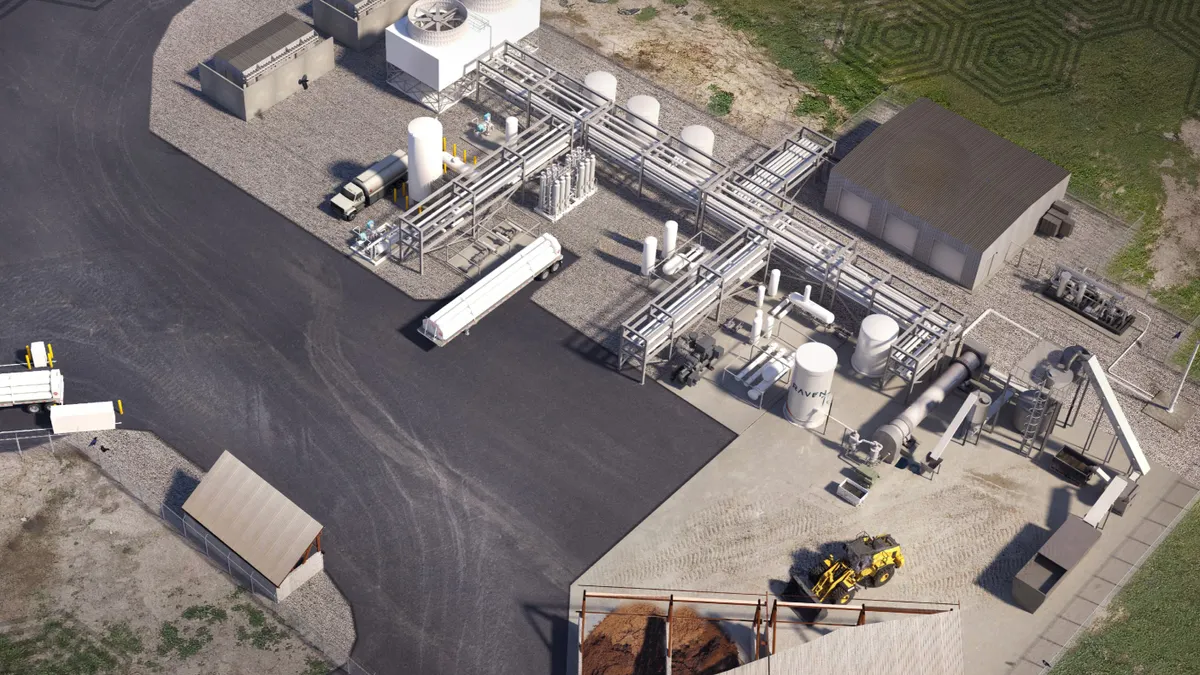As composting infrastructure scales up, operators’ technology needs and options have grown increasingly complex.
Scott Woods, CEO of compost equipment company Sustainable Generation, points to a recently opened Republic Services facility in California that his company worked on as one “gold-standard” example of how modern facilities are evolving. The positive aerated static pile system, which opened at the Otay Landfill in Chula Vista last year, is described as the state’s first fully solar-powered composting operation and can process 200 tons per day. The facility, designed by SCS Engineers, recently won an award from the National Waste & Recycling Association.
Woods’ background includes a stint as CEO of Peninsula Compost in Delaware — which he ended multiple years before that facility was shut down by state regulators. He founded Sustainable Generation in 2012. The company is a licensed sales and service provider of the Gore Cover composting system, which focuses on aerated static pile setups that involve covers controlled by winding machines. This system is one of multiple alternatives to traditional open windrow systems.
Waste Dive recently spoke with Woods about the evolution of composting technologies, managing PFAS (per-and polyfluoroalkyl substances), navigating community perceptions, how new investment is affecting the space and more.
The following interview has been edited for length and clarity.
WASTE DIVE: What makes the Otay project stand out in the U.S. composting industry?
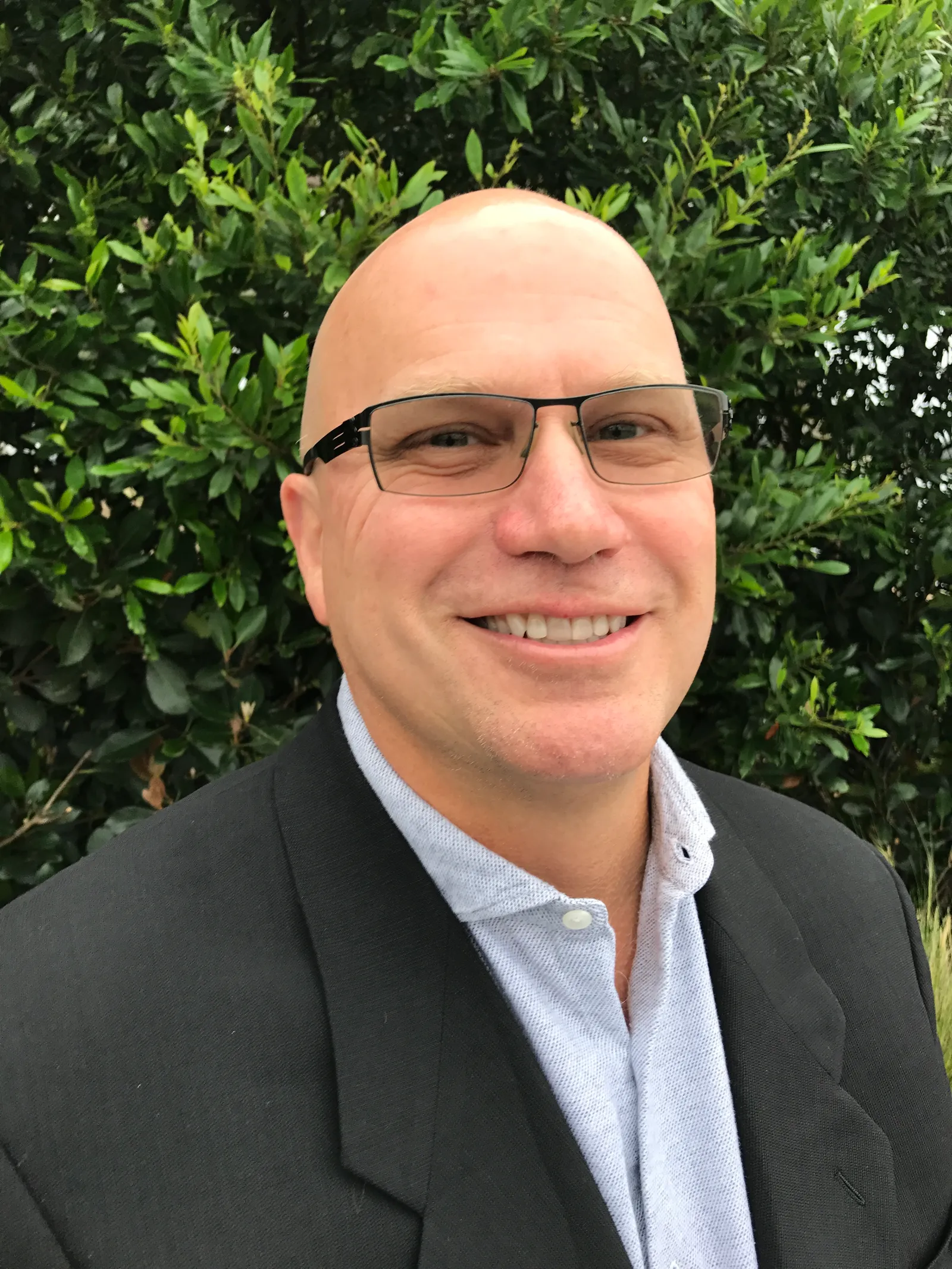
SCOTT WOODS: As far as we know, it is the only large-scale commercial composting project that is powered off the grid. It's processing 60,000 tons [per year]. It has an electric power cover winder machine for handling the Gore Cover.
People want to get away from fossil fuels, including in their cover winding machines, and they don't need an air permit to do so. So for our clients, [electric-powered machines are] becoming very popular. It's also more trendsetting in the fact that composting has been done at landfills all around the country for many years, and most of it is old technology, windrow turning.
With the new regulations today in California — and especially in the South Coast air district, San Joaquin air district and others in the Bay Area where they're trying to reduce emissions, specifically around [volatile organic compounds] and ammonia — the technology needs to be upgraded. The windrow turning just doesn't meet the [regulations]. So more advanced methodologies, such as aerated static piles, require power.
In general, it's getting harder and harder to site compost facilities because of the NIMBY movement. No one wants any type of facility that's processing waste. Landfills are already doing [composting], so it just makes sense. When the truck comes in the landfill, instead of turning right and [the waste] being landfilled, they'll turn and they'll go to a compost facility, where they've already got most of their permits.
It does seem like more people are transitioning from windrows to other systems. Is that mainly something you’re seeing driven by regulations, or are there other factors?
There's a big trend to move in that direction. It's driven a lot by climate change and reducing greenhouse gas emissions. Some places are via mandate, such as California, with SB 1383. Others are doing it because it's the right thing to do, and they know at some point the regulations are going to change. So if they make the investment now, they're going to probably be in compliance in the future as the regs change.
There's other reasons, though, besides just process control, that they would want to do it. We're seeing specifically [that] technologies that have biofilters require a fan to run 24/7. Those are negative air systems, reversing air systems, with composting systems inside a building. The energy costs of running those biofilters is such that the economics are pushing those customers to adopt our type of system.
Some of these other technologies require large amounts of water throughout the process — open windrows, too — to keep the moisture at the appropriate level. Well, when you have a drought, or water is getting expensive just in general, there's environmental reasons why you'd want to switch to technology such as ours, to help reduce those costs and conserve resources.
What are you seeing in terms of concerns around stormwater and leachate management, especially with regard to PFAS? I’ve heard some people say recently that they think anaerobic digestion could be better positioned to deal with this than composting. What would you say on that?
That one's kind of a mixed bag. You could do AD, but you still have digestate at the end of that you have to deal with. So it's not like the problem goes away.
I think for the composting industry, it's the food packaging that’s the source of potential PFAS issues. There's a lot of really smart people working on what are the sources and the causes, and ultimately, we will get solutions out of that. I think it's also important to keep that issue in perspective. I don't think it's unique to the composting industry or the AD industry. I think we all have to deal with the issue.
As we’re seeing more efforts to divert food waste in addition to yard waste, that’s changing the composition of what many of these facilities are dealing with. What does that meant for you and your projects, especially in places like California, where this has really taken off?
For us, it hasn't been really a big change. W.L. Gore actually worked with the regulators in the early 2000s and did a lot of testing — both food waste as well as biosolids — and provided input and data. So it's kind of been in our ecosystem from the beginning.
If you're just doing straight green waste, there's not a lot of odors to deal with. When you start adding food waste, that changes significantly, or even biosolids. We've been dealing with harder feedstocks from the beginning, and it's just part of our DNA. The advantage that we have over some of the others is our technology provides really superior process control in terms of odor management, VOC management, moisture management, energy management.
You mentioned the NIMBY factor earlier as a potential challenge. Skeptics often come back to two projects led by other companies that had odor problems and ongoing community issues — Cedar Grove in Washington and Peninsula in Delaware — which you were involved with prior to an investment by WM. What do you say to people about how it can be different when they might raise those examples?
In order for any system to work, you need people, process and technology. Take a three-legged stool, if you will. If one of them breaks down, your stool falls over.
It's well known — and that's been documented through [the Delaware Department of Natural Resources and Environmental Control] — the process at Peninsula wasn't followed. Our technology, when it's operated properly, it works. There's almost 400 facilities around the world, I think we're at 40 in North America now, and we had one failure. And we know why it failed.
Cedar Grove is a whole different story. It took Cedar Grove a lot of effort, but finally, through [a public records request], they found out one of the municipalities and a PR firm collaborated and basically did a smear campaign against them. There were [hundreds of] emails that weren't turned over during the discovery period, and they came out. Cedar Grove, in the end, won their lawsuits as they should. That's the beauty of due process and the American system.
What’s coming in the next few years for the compost sector? Are we going to see more of these off-grid projects? Will any of the new federal funding help boost investment?
Yes, the federal funding is definitely having a positive impact for composting as well as anaerobic digestion, and actually energy in general.
There's a lot of interest in private equity and venture capital now that they're going after where the federal dollars are going to be. We're seeing other companies, like Goldman Sachs, making investments in green technologies, and that includes AD and composting.
Ten years ago, if you talked to the AD industry, they had brainwashed themselves into believing that their digestate was a product that was ready for sale. We saw a few failures. We saw all of them fail because of odors and things. The whole industry is now coming around [and realizing] digestate isn't a final product. It still needs some treatment in order to create a marketable product. So one of the things we're seeing with all this federal money is a lot more interest in also treating the digestate and creating that final product.
We're also seeing a change in buying habits. Ten years ago, when I started Sustainable Generation, people were buying composting technology on price and what it costs upfront. I think the buying habits of the industry, they're getting a little more sophisticated, and I think the customers are really trying to make decisions that not only help them today, but make sure that they're positioned in the future.


